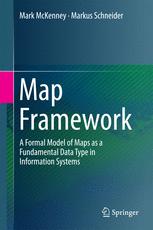

Most ebook files are in PDF format, so you can easily read them using various software such as Foxit Reader or directly on the Google Chrome browser.
Some ebook files are released by publishers in other formats such as .awz, .mobi, .epub, .fb2, etc. You may need to install specific software to read these formats on mobile/PC, such as Calibre.
Please read the tutorial at this link: https://ebookbell.com/faq
We offer FREE conversion to the popular formats you request; however, this may take some time. Therefore, right after payment, please email us, and we will try to provide the service as quickly as possible.
For some exceptional file formats or broken links (if any), please refrain from opening any disputes. Instead, email us first, and we will try to assist within a maximum of 6 hours.
EbookBell Team

0.0
0 reviewsThis book explores the concept of a map as a fundamental data type. It defines maps at three levels. The first is an abstract level, in which mathematic concepts are leveraged to precisely explain maps and operational semantics. The second is at a discrete level, in which graph theory is used to create a data model with the goal of implementation in computer systems. Finally, maps are examined at an implementation level, in which the authors discuss the implementation of a fundamental map data type in database systems.
The map data type presented in this book creates new mechanisms for the storage, analysis, and computation of map data objects in any field that represents data in a map form. The authors develop a model that includes a map data type capable of representing thematic and geometric attributes in a single data object. The book provides a complete example of mathematically defining a data type, ensuring closure properties of those operations, and then translating that type into a state that is suited for implementation in a particular context.
The book is designed for researchers and professionals working in geography or computer science in a range of fields including navigation, reasoning, robotics, geospatial analysis, data management, and information retrieval.